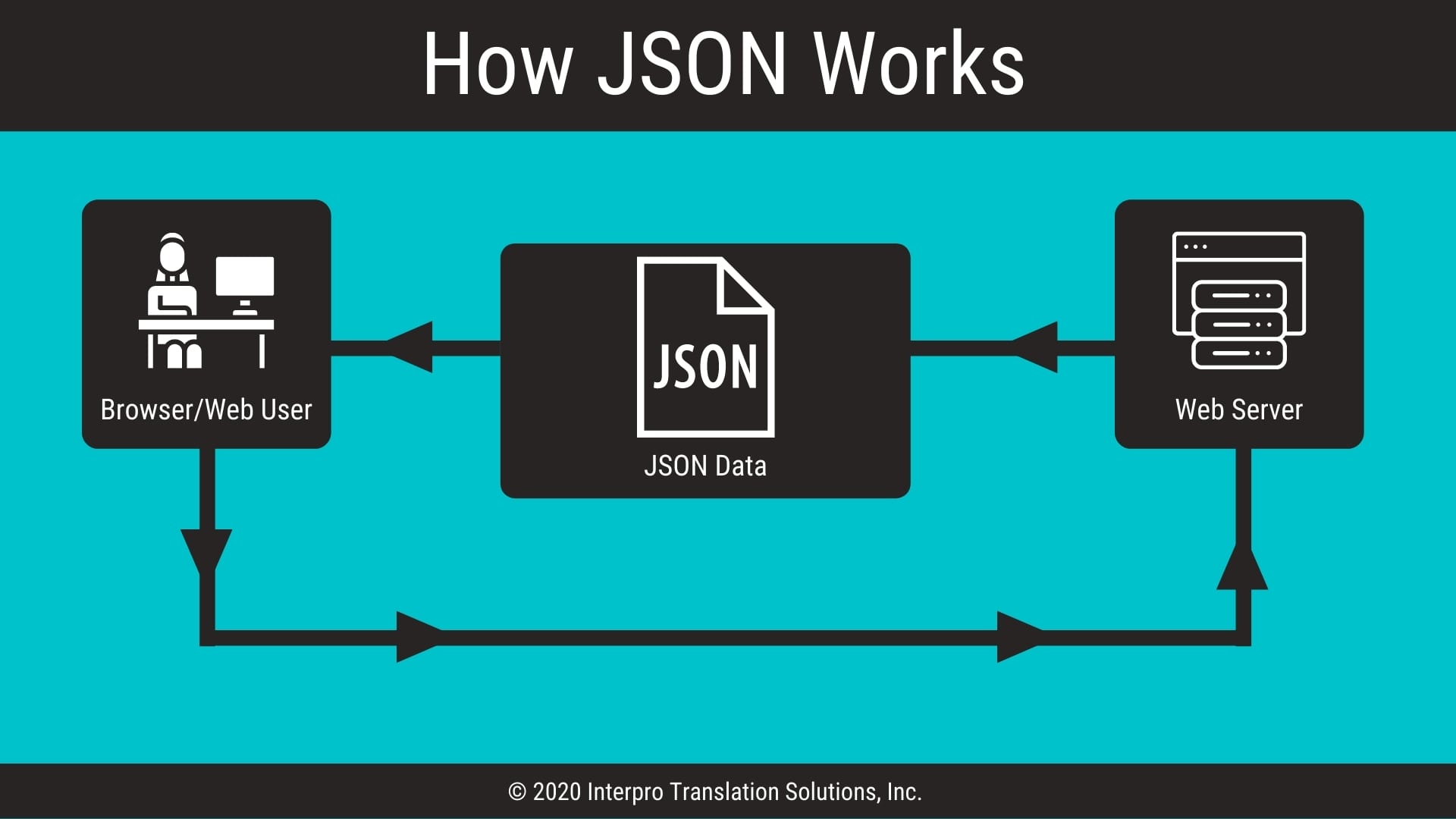
Translating JSON Content
Having your website available in multiple languages is more important now than ever before. While English-language speakers still make up the largest share of users on the internet, that percentage is shrinking. The language that once captured nearly 80% of content on the web has now shrunk to just over 25% of users. Translating JSON content allows businesses to connect with the other 75% of their potential audiences.
A website is much more than what you see when you type in the web address. Behind every website are pages of codes that describe everything from the layout to the format to the content on the screen. While your average website visitor may not be able to see it, a lot is going on behind the scenes. JSON is one of many data interchange formats that help to bring a website to life.
In this article, we’ll break down what JSON files are, why JSON translation is beneficial, and why it makes sense to partner with an experienced, professional translation company to get the job done right the first time.
What is a JSON file?

JSON stands for JavaScript Object Notation, and is one of the most popular data-interchange formats being used today. It is a syntax for storing and exchanging information between systems over the internet, most commonly between a server and a web application, using attribute-value pairs.
Here’s another way of looking at JSON, in simpler terms.
Say your friend wants an object that you have. Mailing the item itself would be one way to achieve your goal, but that could take a while. Alternatively, you could describe that item’s attributes, which would allow your friend to recreate the same object without actually receiving it. This is how data are transmitted via JSON.
Though it was originally derived from JavaScript, JSON is actually a language-independent data format, meaning that virtually all modern programming languages support the structure in one way or another.
JSON works well for several reasons:
- Unlike other types of formats, JSON is both easily human and machine-readable.
- JSON has support for Unicode, which allows information, regardless of human language, to be transferred and displayed properly. Some formats don’t support non-Latin-based characters.
- JSON feeds can be loaded asynchronously much easier than XML or RSS.
- The syntax and parsing requirements are strict, which allows it to remain efficient, simple, and consistent.
What is JSON used for?
JSON has many applications, but one of the largest is its role in content management systems.
Content management systems (CMS) allow people to edit text, photos, and other files on websites – all without the need to possess extensive technical knowledge. In fact, more than half of all websites are built using a CMS. The user can construct their desired website using a user-friendly, intuitive interface, while the CMS applications handle coding, database queries, and back-end infrastructure. Frequently, content management systems use JSON to store and organize site content.
The JSON translation process
JSON translation involves translating the data contained in the JSON files from one natural language to another, thus making a website accessible to a wider audience. The process is similar to XML file translation.
JSON translation isn’t as simple as exporting a file and translating the text word for word. This is because JSON files contain two types of information: contextual data and structural data. Structural data should not be translated, as doing so can result in a non-functional website. It takes a skilled eye to differentiate between the two types of data and, for that reason, it is advisable that experienced professionals handle JSON translation.
Finding the right localization partner is key.
As with any type of translation project, the success in JSON translation is directly dependent on who your localization partner is. Your translation company should have skilled linguists providing accurate translations working in tandem with in-house localization engineering expertise.
If your website is consumer-facing, accurate translation builds confidence and legitimacy in your brand. Similarly, websites that are built for internal use also benefit from clear and correct translations. Employees will be able to fully understand the website’s content and navigation, boosting inclusivity, efficiency, and minimizing frustration levels.
Effective engineering
The second key to ensuring a successful JSON translation project is coordination with an experienced engineer. An in-house expert will make sure that there are no structural changes to the file that could negatively impact a website’s integrity by erroneously modifying code. Localization engineers prepare files in a way so that only translatable text is made accessible to linguists.
Together, these two elements make for an effective turnkey solution resulting in fully translated, import-ready JSON deliverables. The process should also include quality assurance ensuring nothing “breaks” post-delivery. Once translated files are delivered, they should be ready for immediate use.
Multilingual websites expand your global reach. Exponentially.
JSON translation may be just one component in your website’s overall translation and localization strategy. By making your website accessible to other languages, your website has increased potential to:
- Reach a wider audience and attract new customers. By offering your website in another language, you will open up your site to visitors who may not speak English, or who are more comfortable viewing websites in their native language.
- Demonstrate that you are putting your audience first. Whether you are targeting customers, association members, or employees, providing your audience with information in their native language is a great way to show that you care.
- Gain relevance in other search engines. Homegrown search engines are emerging in other countries to meet the needs and habits of their populations. Providing your website in different languages is key to tapping into these markets.
Conclusion
JSON is a commonly used data-interchange format. Thanks to its straightforward, easily readable style, it has become one of the most preferred ways to store and organize website content. JSON translation is an important element to successful website translations; which makes your website accessible across language boundaries. For an accurately translated and functional multilingual website, it always makes good business sense to partner with an experienced translation company that can provide linguistic proficiency coupled with in-house engineering expertise.
Category: Translation
Tags: JSON, JSON Localization, JSON Translation
Service: Software Translation, Website Translation
Industry: Software
Don't forget to share this post!
Stay Updated with Interpro
Subscribe to our newsletter for the latest updates and insights in translation and localization.





